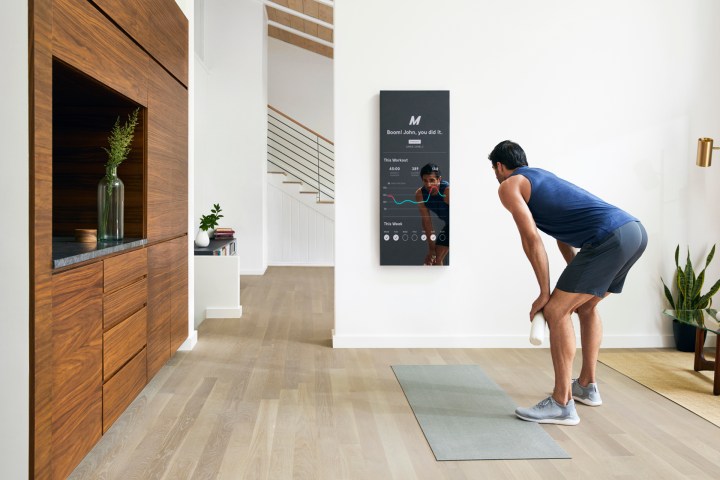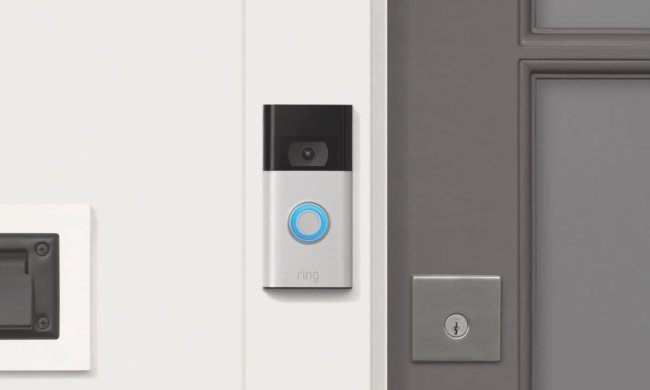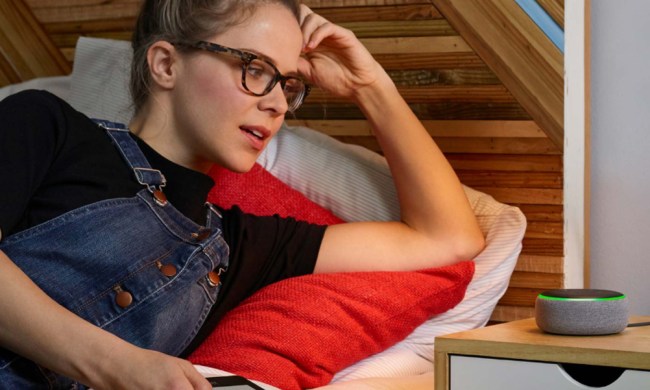When it comes to high-end home gym experiences, there are pieces of equipment that clearly stand out from the rest: Tonal and Mirror. These are two of the best examples of wall-based gym tech designed to give you a full workout experience just about anywhere in your home.
How can you get a solid workout from wall-mounted equipment? These are smart home gyms based on large wall-mounted touchscreens that help walk you through exercises, practice form, attend gym classes, and much more. You don’t need extra home gym equipment, exercise bikes, or anything else to get a decent workout. All you need is the panel, any included accessories, and a couple of pads for the floor. However, while both Tonal and Mirror take this approach, these home gyms do have some key differences. Here’s which is best based on your workout goals.
Design

The design of both Tonal (51 inches high and 22 inches wide) and Mirror (52 inches high and 22 inches wide) is broadly the same. They are large touchscreens with sensors that you can mount securely on a wall in a corner of your home. Note: There should be enough room to workout around it and the floor needs to able to safely take a beating when you work out).
However, upon closer inspection, several important design differences emerge. The Tonal panel is larger, bulkier, and heavier. As we discuss in our Tonal review, it’s made with sturdy sides that can support workout bars in various positions to set up resistance training, connected workout benches, and more.
The Mirror, meanwhile, is a slender, beautiful model, focused on looking like, well, a mirror. The equipment uses similar touchscreen options, training tools, and sensors to Tonal, but in a more compact package. That design element is useful if you’re limited on space. It’s also easier to set up, but it doesn’t have the same full-workout versatility as Tonal.
We’re awarding this category to Tonal for a more robust design.
Workout options

Let’s look at the workouts each model offers! The built-in guides are one of the biggest benefits to each product. They offer large, clear guides for all movements, and help monitor your form so that you avoid mistakes that could cause injury or prevent gains. Both allow you to build a customized profile based on the type of workouts you want. Both units also feature a library of thousands of various workouts.
There are a couple key differences that emerge. Tonal is more concerned with form and progression than streaming live workouts. Mirror has frequent live events and encourages the social aspect of workouts.
While both panels support a wide variety of workouts, Tonal — and its impressive array of accessories — is clearly more focused on strength training, with its weights and resistance, than the Mirror. You can see the more than 200 strength training moves Tonal supports in multiple configurations, from barbell presses and deadlifts to bicep curls and resistance-based squats. It’s an impressive lineup, especially if you want to replicate a full gym at home without taking up too much space.
Mirror, on the other hand, is not focused on strength training but on cardio and endurance. There’s no additional features that can mimic weights aside from an optional accessory. Mirror’s highlighted workouts include boxing, dance cardio, pilates, meditation, and ballet. If a workout requires accessories, like a kettlebell session, you’ll have to bring your own and let Mirror know you have it. The way it supports these workouts is fun and effective, but it’s not a panel for building much muscle.
This category is a tie, because the workouts vary so much. If you’re looking to build strength, Tonal is the best bet. If you want to tone and do more cardio, the Mirror is a better fit.
Smart features

Both panels have intelligent features that monitor your form and give you goals or progression scores to help you stay on track. The touchscreens can accurately track times and workout stages, as well as set robust schedules for your activities.
However, Tonal goes a lot deeper with smart tracking for those who love data. The smart handles and smart bars track your reps. A “digital weight” system can automatically increase resistance as you get stronger, ensuring you’re always improving. The Tonal provides lots of personalized workout reports featuring graphs and percentages. It takes a lot of time investment to set it up, but you get a lot of workout data in return and never have to worry if you’re choosing the right weight.
Mirror is easier to use — without question. However, access to intelligent workout data is more limited unless you opt for the “smart weights” dumbells accessory. Mirror is more about what’s on the screen, in the moment, as you’re moving. Data focuses on endurance stats like how much time remains in the exercise and time improvement, along with some basic smart recommendations for classes you might like. There’s also more of a social factor, with the Mirror panel making it clear when you’re doing the same workouts with the rest of the class. It even has options to share footage and get the feeling of being in a group while at home. Learn more from our Mirror review here.
We’re giving this category to Tonal for all the detailed data it offers.
Pricing and availability

You can buy both Tonal and Mirror online right now, but the packages they offer differ yet again.
Tonal offers one package at $2,995 for the basic home gym panel, plus shipping and installation fees tracked as separate payments. Then there’s the $495 smart accessories bundle, which is more or less a required purchase to get all the unique strength-training benefits of Tonal. That brings the total to above $3,500.
Mirror offers several packages, depending on the accessories. The base package currently sells for $1,495 and includes just the Mirror panel with its basic setup components. For $100 more, you get a variety of accessories for smart fitness monitors, as well as a collection of Lululemon gear for various exercises. Pay $100 more than that, and Mirror adds a set of weights. Again, accessories aren’t quite as important for Mirror’s focus on body-based workouts, but you can pay more to unlock more strength training options. Even so, Mirror is much less expensive than Tonal.
Let’s not forget about membership fees. Neither home gym panel really works without a membership to access content and all the smart features. Mirror specifically requires it, and while Tonal doesn’t make it as obvious, there’s not much point in investing in either mirror unless you also subscribe to the service. Mirror’s services is $39 per month for up to six different profiles. Tonal’s service is $49 per month.
This category goes to Mirror, as it’s clearly the more affordable option of the two.
Final word
Tonal will give you the better workout, especially if you’re interested in building muscle or charting clear progress. Mirror is a more social option with plenty of live events and lots of ways to work up a sweat with bodyweight exercises. However, it has relatively little focus on strength training. Despite their surface similarities, these are very different kinds of home gym tech. At less than half the cost, Mirror is an easier entry point, but those who want serious results may be happier with Tonal — even with the high price of entry.



